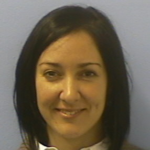Link to Pubmed [PMID] – 25668150
Microb. Drug Resist. 2015 Apr;21(2):237-43
BACKGROUND: A 24-year-old female with recurrent skin and soft tissue infections (SSTI) was enrolled as part of a multicenter observational cohort study conducted by a practice-based research network (PBRN) on community-acquired methicillin-resistant Staphylococcus aureus (CA-MRSA).
METHODS: Strains were characterized by pulsed-field gel electrophoresis (PFGE), spa typing, and multilocus sequence typing. MRSA strains were analyzed for SCCmec type and the presence of the Panton-Valentine leukocidin (PVL) and arginine catabolic mobile element (ACME) using PCR.
RESULTS: In the first episode, S. aureus was recovered from the wound and inguinal folds; in the second, S. aureus was recovered from a lower abdomen furuncle, inguinal folds, and patellar fold. Molecular typing identified CA-MRSA clone USA300 in all samples as spa-type t008, ST8, SCCmecIVa, and a typical PFGE pattern. The strain carried virulence genes pvl and ACME type I. Five SSTI episodes were documented despite successful resolution by antibiotic treatment, with and without incision and drainage.
CONCLUSIONS: The source of the USA300 strain remains unknown. The isolate may represent a persistent strain capable of surviving extensive antibiotic pressure or a persistent environmental reservoir may be the source, possibly in the patient’s household, from which bacteria were repeatedly introduced into the skin flora with subsequent infections.
